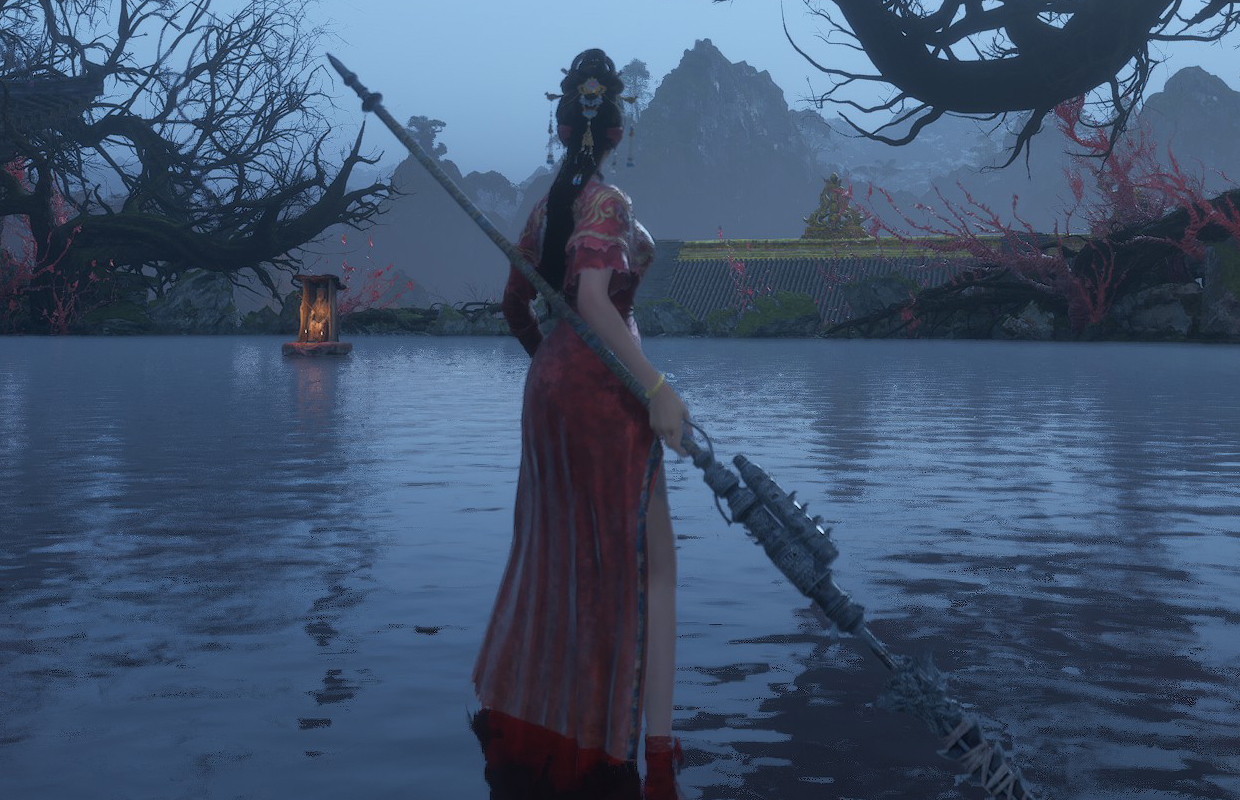
The initial unveiling of the game “Wuchang: Fallen Feathers” in September 2021 by the Chengdu-based Leenzee game studio was quite unusual. Instead of a traditional announcement, they chose to reveal their first project through an extended 18-minute gameplay video. Despite its relatively polished state at the time, they mentioned that they intended to spend the next three years further developing “Wuchang: Fallen Feathers”.
In June 2024, Leenzee’s Chinese action RPG made its comeback to the public eye. Although the launch of Black Myth: Wukong hadn’t happened yet, it’s reasonable to assume that Game Science’s tremendous success must have had a domino effect on Leenzee, sending a clear signal – there was a significant demand for Chinese developers in the high-end, non-mobile gaming market.
Absolutely, the Soulslike sub-genre in the action RPG world remains popular and thriving, and I don’t mind it one bit. In fact, I eagerly anticipate how various developers, both seasoned and upcoming, will put their unique spin on this style. What intrigues me about this genre is that there seems to be no definitive blueprint for creating a game inspired by the Souls series, allowing creators to mold the core concept according to their distinctive styles.
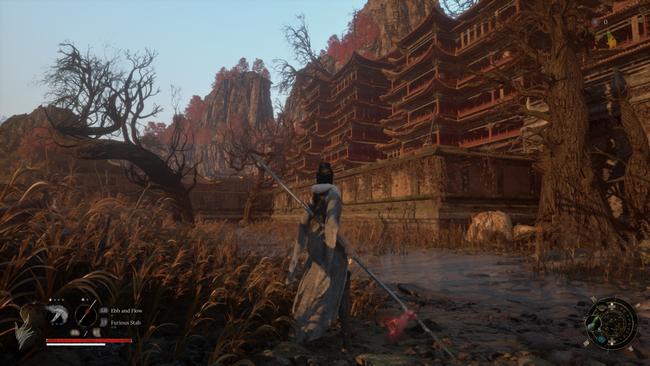
In the game “Wuchang: Fallen Feathers”, Leenzee skillfully crafted an unusual narrative and ambiance seldom seen in other games. The storyline is darkly compelling, set against the backdrop of the late Ming Dynasty where a mysterious affliction known as the Feathering has swiftly taken over the land. Those touched by this malady gradually lose their grip on reality, memories, and humanity. Players find themselves in control of a woman named Wuchang, who has recently contracted the Feathering but still retains her sanity despite suffering from amnesia.
At the game’s onset, there’s a notable dialogue between Xuanyangzi, a Taoist priest, and Wuchang. During this conversation, Xuanyangzi recalls that Wuchang was previously traveling with someone else, her sister to be precise, and has been studying ways to alleviate the Feathering’s impact. This particular exchange caught my attention because it was one of the rare instances where Wuchang engages in a discussion using her own voice. Following this initial conversation, Wuchang becomes a mute protagonist; players can select dialogue options to gather additional information, but Wuchang remains silent throughout the rest of the game.
I believe this aspect of the game may be hurting its quality, since it initially piques curiosity about Wuchang’s character development – only for it to rapidly diminish and leave her as a passive character. The characters tend to exchange and repeat information without providing any insights into Wuchang’s thoughts as the story unfolds. It seems like a missed chance.
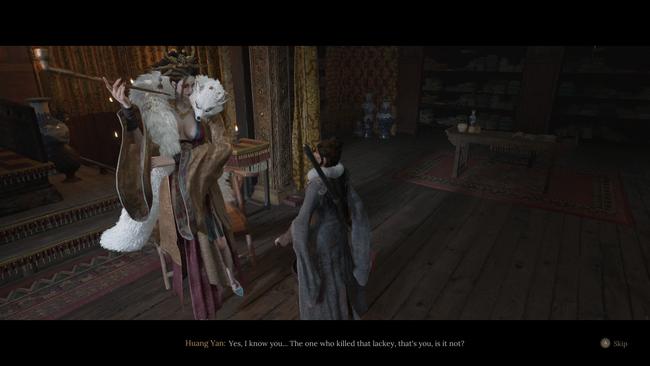
Although the main storyline is generally solid, I must confess that it’s been a while since I last studied Ming dynasty history. Consequently, some aspects of the game might be confusing for those who aren’t familiar with the fall of the Ming dynasty or the political struggles leading to its downfall. In Wuchang: Fallen Feathers, several factions that were already at odds beforehand have become even more entangled in conflict as a result of the emergence of the Feathering, which has only served to exacerbate the chaos.
Skipping over some details might not affect the overall storyline significantly, but it may make players miss out on understanding smaller side-stories better. It’s clear that Leenzee didn’t hold back in portraying this era with a critical eye. There are numerous instances of violence, and many characters in Wuchang seem to be taking advantage of the disorder. However, completing all subquests will still elicit a strong emotional response from players.
In essence, what holds Wuchang: Fallen Feathers together is its enigmatic, toxic allure stemming from its intricate world design. It exudes a captivating eeriness that seamlessly blends the distinctive atmosphere of its time period with dark fantasy. For instance, a palace room might be adorned with opulent ornaments while rotting flesh lies scattered on the floor, attracting the gaze of cannibals seeking sustenance amidst the luxury. Simultaneously, a group of rebels gather around a modest campfire in the cold, watching as an ominous device nearby continues to generate waves of undead horde. Wuchang: Fallen Feathers presents a merciless world, and it does so masterfully.

It’s quite remarkable to notice the meticulous planning in the game layouts, more so because this is Leenzee’s first game. Players move smoothly from one area to another, often stumbling upon checkpoint shrines or paths that provide shortcuts back to previously explored shrines. The way Leenzee has integrated multiple routes seems cleverly designed.
Initially, I found myself bewildered as numerous intertwining paths in the starting zones seemed deceptively alike, hinting at the potential for easy disorientation. But as I delved deeper, I unconsciously created a mental blueprint of this game’s realm. This was because these areas either led me back to familiar territories marked by distinct landmarks or introduced fresh zones that connected to paths I had initially overlooked.
In Wuchang: Fallen Feathers, the absence of a map might have been one of its potential weaknesses, but surprisingly, it transformed into one of its key strengths. This design choice compelled me to meticulously learn the layout of routes in nearly every game area, which in turn made the environments and locales more vividly etched in my memory naturally. Additionally, it’s worth mentioning that the environmental diversity starts to significantly increase after the initial third of the game.
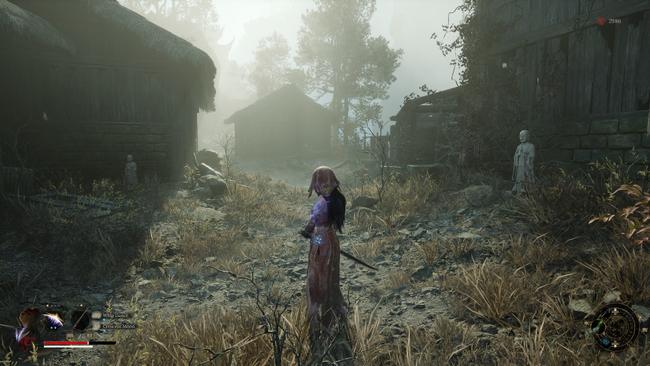
In various settings, both aesthetically and mechanically, there’s plenty to appreciate. For example, a snowy area in the game is meticulously designed to account for how the snow gets compacted as Wuchang moves or even when her weapon touches it. The snow deforms not just where Wuchang passes, but also at the tip of her weapon if it’s large enough. Gates open by clearing a path through the snow, leaving skidmarks behind. If you don’t use the Spicy Soup consumable, staying in the snow will fill up a Frostbite status that temporarily decreases Wuchang’s stamina bar, but being in sunlight naturally reduces this buildup. The game’s world is richly detailed, and the example given here barely scratches the surface.
One aspect I appreciate about Leenzee’s game, Wuchang: Fallen Feathers, is its dynamic combat system. Initially, it can be a bit complex, but as you unlock more weapons, abilities, and spells for Wuchang, the pace of battles speeds up, becomes smooth, and crucially, adaptable. As the battles become tougher and deadlier, it becomes evident that Wuchang: Fallen Feathers requires players to be proactive, mirroring the frantic actions of their adversaries.
In the early stages of gameplay, players promptly grab their initial choice among a one-handed sword, longsword, spear, axe, or dual-blades. Characters like Wuchang can hold up to two weapons simultaneously. Each weapon category features a unique sequence of basic light attacks, a chargeable heavy attack, and a signature ability that’s exclusive to the specific weapon. For instance, if a player carries two spears, each will have distinct primary abilities that cannot be interchanged. However, each weapon has a secondary skill that can be customized. Additionally, up to four spells can also be equipped. As players collect an array of weapons and offensive tools, Wuchang: Fallen Feathers offers the opportunity to shape unique builds and playstyles for exploration.
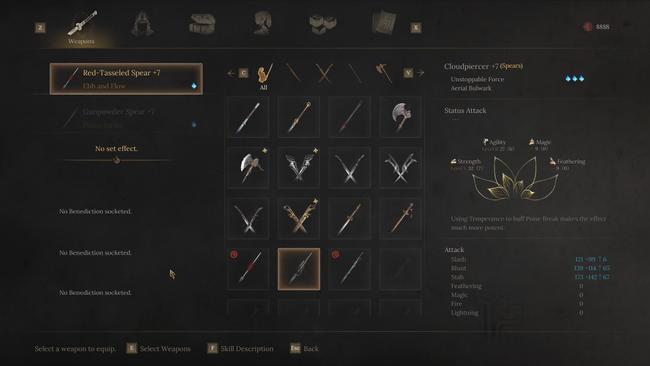
This functionality is made available due to the limitless respec option in the game’s Impetus Repository skill tree. Instead of using soul currency to boost each stat point separately, players can use it to acquire Red Mercury Essence. This essence can be used to activate nodes on the skill tree, which resembles the layout of skill trees in games like Diablo IV or Path of Exile. Players can progress towards various abilities and enhancements, with generic stat enhancement nodes serving as a pathway to them.
In the heart of the Impetus Repository, each type of weapon has its specific division. The western division, originating from the core, offers universal enhancements like acquiring various elemental Bone Needles that can be inserted into a rechargeable Temperance item to temporarily empower the equipped weapon with the chosen element. Additionally, this part of the Impetus Repository allows for improving both the quantity and strength of health flasks using special rare items hidden within grand treasure chests.
Regardless of the character’s build or playstyle, combat effectiveness is significantly boosted by a resource called Skyborn Might, serving a role similar to Mana Points in other RPGs. Essentially, Skyborn Might empowers Wuchang to cast spells and execute advanced versions of her weapon skills. The cost for utilizing certain spells and abilities can vary from 1 MP to 3 MP and so on. Initially, Skyborn Might is primarily acquired by skillfully dodging incoming enemy attacks, but later, through skill tree upgrades and consumables, alternative ways to gain it become available.
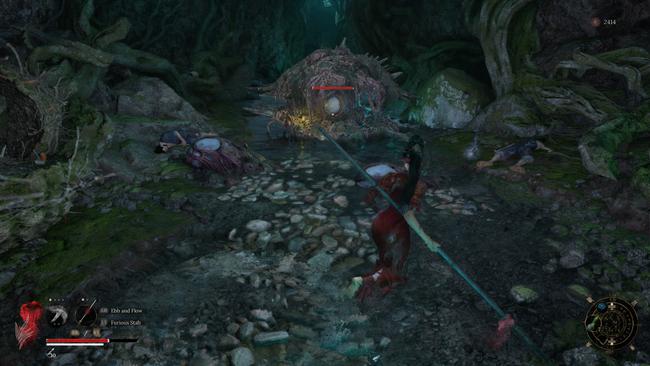
This explains why enemies continue to act aggressively. To keep their offensive capabilities strong, players must master evasive moves. Defending against attacks is possible with certain weapons, but the emphasis is on dodging attacks skillfully using Wuchang’s invincibility frames during a dodge.
A unique feature that sets Wuchang: Fallen Feathers apart from other Soulslike games is its Madness system. This system accumulates a numerical value following each death, but it can also be increased manually without dying through certain items and methods. When in the Madness state, Wuchang deals more damage, but she also takes more damage. Reaching certain Madness threshold values introduces additional attributes to her attacks or skills.
A compact example that ties everything nicely is using a magical build centered around one-handed swords. Since spells require Skyborn Might, having a steady source without frequently dodging enemy attacks can be beneficial. Interestingly, one of the initial nodes in the one-handed sword branch within the Impetus Repository indicates that players will periodically acquire Skyborn Might just by wielding a one-handed sword. However, Skyborn Might won’t last forever; it fades after a while if left unused. Later on this one-handed sword tree, there’s a node that ensures Skyborn Might won’t decay below 3 stacks when Wuchang is above 90% Madness. This essentially guarantees a sufficient supply of MP to continuously cast spells, as Skyborn Might regenerates passively over time without the worry that it will all vanish once it reaches three stacks.
In simpler terms, you don’t have to worry about losing resources if you decide to experiment with a new build or playing style using a different weapon. The game allows you to restart the initial node that starts a specific weapon type’s progression in the Impetus Repository, which refunds all resources invested in that entire branch, including items for upgrading Weapon Mastery. This feature can be used as many times as you want, and I personally tried out around three different builds during my gameplay to understand how other weapons functioned.
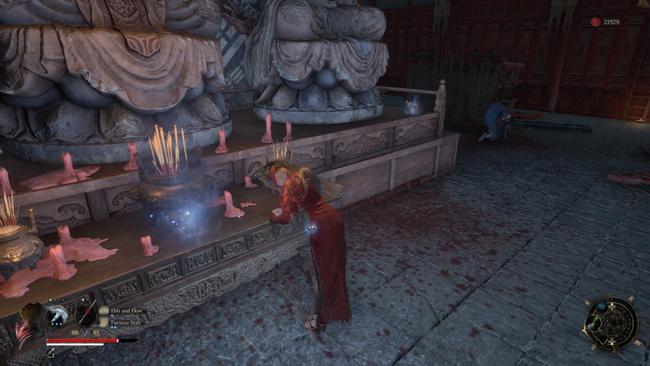
In the early stages of the game, the battle system doesn’t fully reach its potential. More exciting combat options are introduced later on rather than being distributed throughout the entire game. Ideally, these features would be dispersed more evenly, making the beginning of the game as thrilling as the latter part.
In Wuchang: Fallen Feathers, I encountered some of the toughest battles against bosses this year. The game frequently gave me a run for my money, and there were instances where my defeats undeniably stemmed from my own lack of skill. However, there were moments when I found myself stuck on a haphazard piece of environment while hugging the corners of the boss arena. I eventually figured out never to rely on walls during boss fights, as even the boss models themselves sometimes trapped me in tight spaces.
Surprisingly, I found it beneficial that there wasn’t a large central bar for the boss’s Health Points (HP) controlling the rhythm of battles. Instead, a smaller circular gauge fills when players consistently hit the boss. Filling this up triggers a Poise Break, making the boss vulnerable and allowing players to unleash a strong Obliteration attack on it for a few seconds.
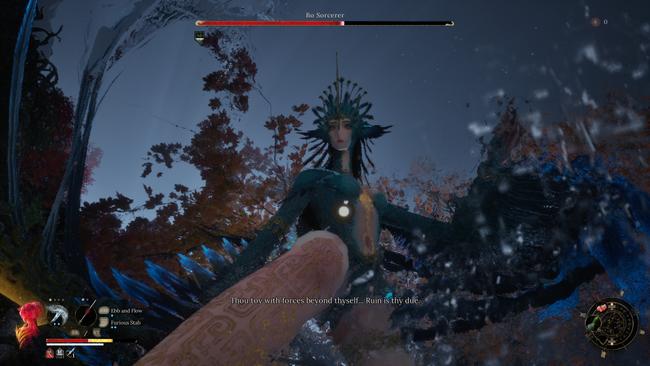
In boss battles, the attack pattern isn’t solely dependent on this single mechanic; instead, players need to make swift decisions about which attacks can be countered and which require immediate respect. The optimal approach can vary significantly based on the player’s equipment and playstyle, making each battle unique.
As a player, I find it more engaging and strategic to take charge of my own damage phases instead of relying on the game to signal when I can strike using a conventional stagger bar. Bosses are relentless adversaries who are quick to capitalize on any opportunity, especially when I use a health flask, as they seem to anticipate this move and retaliate swiftly in my moment of vulnerability.
Funny thing, the bosses from the initial two-thirds of the game felt more iconic since I had a tougher time beating them. But then I stumbled upon a gameplay setup that completely turned the tables, making those challenging bosses seem like a breeze. Frankly, I’m still amazed at how this setup synergized so perfectly. Makes me wonder if the devs might adjust it in future updates.
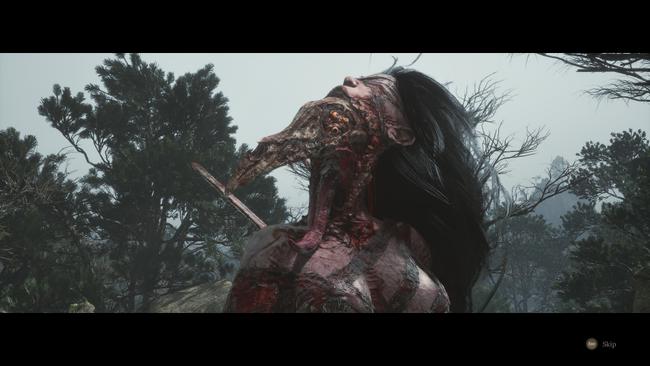
In addition, I’d like to highlight the impressive music in Leenzee’s first game. The frequent incorporation of traditional Chinese instruments such as the pipa, dizi, erhu, and suona is quite remarkable. Particularly noteworthy are these instruments in Wuchang: Fallen Feathers’ soundtrack, which create a harmonious symphony that seamlessly complements the intriguing, atmospheric environment the developers have created. It’s a stunning soundtrack that isn’t shy about shifting genres on a dime to match a boss’s transformation.
As a fervent admirer of the upcoming release of Wuchang: Fallen Feathers, I can’t help but notice the enticing fan service element that has been strategically marketed. Within the game, there is an array of outfits, whether you pre-order, opt for the Deluxe Edition, or simply earn them in-game, which range from seductive and revealing to those that adhere to the era’s fashion norms. Some designs even veer towards the extravagant and fantastical. Personally, I’m not overly concerned as long as this aspect doesn’t detract from a robust gameplay experience, and Wuchang: Fallen Feathers consistently demonstrates this. Moreover, there are numerous other outfits that reveal less skin yet remain visually stunning.
Although I enjoyed playing Wuchang: Fallen Feathers overall, the poor optimization in its PC version was a significant letdown. With a powerful RTX 3080 GPU and 5900X CPU, I expected smooth gameplay, but encountered frequent stuttering and low-quality textures instead. The game’s performance dipped significantly during the latter stages due to memory leak issues, causing it to crash on occasion because my video memory was maxed out, necessitating a full PC restart. Many other players have reported similar or more severe problems that Leenzee is still working to address as of this review’s publication.

“Wuchang: Fallen Feathers, Leenzee’s debut game project, is nothing short of impressive. The blend of its adaptable gaming mechanics and the immersive, seamlessly constructed game world is noteworthy. What sets it apart is its authentic portrayal of the Ming dynasty, which fearlessly illustrates the harsh realities of this era, even as it’s infused with fantastical elements that enhance the experience. I found my time with Wuchang: Fallen Feathers quite enjoyable, but regrettably, its poor performance and optimization on PC significantly impacted my overall enjoyment.
7
As a gaming enthusiast, I’ve been diving deep into “Wuchang: Fallen Feathers” and discovered it’s not just exclusive to PC. You can find this game on the latest consoles like the PlayStation 5 and Xbox Series X|S too, expanding the fun for everyone!
Read More
- Connections Help, Hints & Clues for Today, March 1
- The games you need to play to prepare for Elden Ring: Nightreign
- Shiba Inu Sees Bullish Reversal In On-Chain Metrics, Can SHIB Price Recover?
- When To Expect Blue Lock Chapter 287 Spoilers & Manga Leaks
- What Is Dunkin Donuts Halloween Munchkins Bucket?
- Shruti Haasan is off from Instagram for THIS reason; drops a comeback message on Twitter
- BUZZ: Rajinikanth starrer Jailer 2 directed by Nelson Dilipkumar likely to go on floors from March 2025
- Chiranjeevi joins Prime Minister Narendra Modi for Pongal celebrations in Delhi; see PICS
- Pepe Battles Price Decline, But Analysts Signal A Potential Rally Ahead
- Sitara Ghattamaneni: The 12-Year-Old Fashionista Taking the Spotlight by Storm!
2025-07-27 00:57